Home>Articles>Where Does The Mineral Buildup On Plumbing Fixtures Come From?
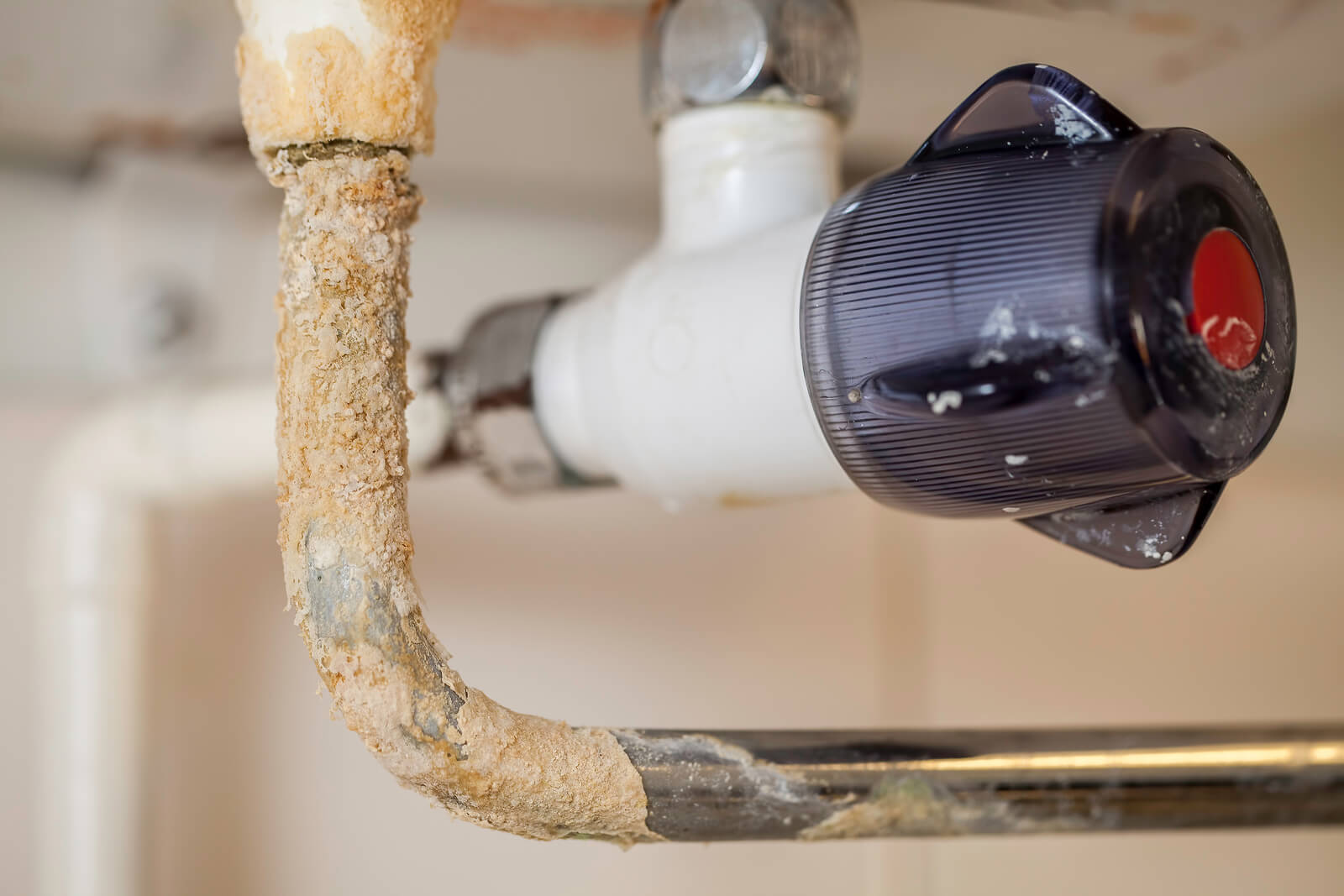

Articles
Where Does The Mineral Buildup On Plumbing Fixtures Come From?
Modified: December 7, 2023
Learn about the origin of mineral buildup on plumbing fixtures with our informative articles. Find out how to prevent and remove this issue.
(Many of the links in this article redirect to a specific reviewed product. Your purchase of these products through affiliate links helps to generate commission for Storables.com, at no extra cost. Learn more)
Introduction
Have you ever noticed that over time, the faucets, showerheads, and other plumbing fixtures in your home start developing a crusty, white buildup? This mineral buildup, also known as limescale or scale, can be quite unsightly and can even affect the performance of your fixtures. But where does this mineral buildup come from?
In this article, we will dive deep into the world of mineral buildup on plumbing fixtures, exploring its sources and effects. We will also provide some prevention and treatment methods to help you keep your fixtures clean and efficiently functioning.
Understanding the causes behind mineral buildup can help you take the necessary steps to prevent it and maintain the longevity of your plumbing fixtures. Let’s explore the sources of mineral buildup in more detail.
Key Takeaways:
- Say goodbye to unsightly mineral buildup on your plumbing fixtures by understanding the sources and effects. Implement preventive measures like water softeners and filtration systems to keep your fixtures clean and efficient.
- Regular cleaning and maintenance, along with preventive measures like water softeners and filtration systems, can effectively manage mineral buildup. Addressing the issue promptly ensures a smoothly running plumbing system and well-maintained fixtures in your home.
Read more: Where Did The Word Plumbing Come From
Understanding Mineral Buildup
Before we delve into the sources of mineral buildup, it’s important to understand what it actually is. Mineral buildup, or limescale, is a deposit that forms when water containing high levels of minerals such as calcium and magnesium evaporates or is left behind on surfaces. These minerals are naturally present in water and can vary in concentration depending on the region.
As water flows through your plumbing system and comes into contact with various fixtures, it can leave behind traces of these minerals. Over time, these deposits accumulate and form a hard, crusty buildup that can be difficult to remove.
The severity of mineral buildup can vary depending on the hardness of the water in your area. Hard water contains higher levels of minerals and is more likely to cause significant scale buildup. If you live in an area with hard water, you may notice the effects of mineral buildup more prominently.
Now that we have a basic understanding of what mineral buildup is, let’s explore the sources that contribute to its formation.
Sources of Mineral Buildup
There are several sources that contribute to the formation of mineral buildup on plumbing fixtures. Understanding these sources can help you address the issue effectively. Let’s take a look at the most common ones:
- Hard Water: Hard water is a primary contributor to mineral buildup. It contains high levels of minerals like calcium and magnesium. As the water evaporates or is left behind on fixtures, these minerals crystallize and form limescale.
- Sediment: Sediments in water, such as sand or fine particles, can also contribute to mineral buildup. These sediments can settle on fixtures and act as a bonding agent for the minerals, making the buildup more pronounced.
- Pipe Corrosion: Corroded pipes can release metal ions into the water supply, which can accelerate mineral buildup. These ions can react with minerals in the water, causing them to solidify and adhere to the fixtures.
- Old Plumbing Systems: Older plumbing systems may have pipes with rough surfaces or accumulated layers of mineral buildup. These surfaces provide an ideal environment for minerals to adhere to and accumulate over time.
By identifying the sources of mineral buildup, you can take appropriate measures to minimize its formation. In the next section, we will discuss the effects of mineral buildup on plumbing fixtures.
Hard Water
One of the main sources of mineral buildup on plumbing fixtures is hard water. Hard water contains high levels of minerals such as calcium and magnesium. When hard water is heated or left to evaporate, these minerals can form limescale deposits on surfaces.
The degree of hardness in water is determined by the concentration of these minerals. The higher the mineral content, the harder the water. Hard water is a common issue in many areas, and its effects can be seen through mineral buildup on fixtures, as well as other problems throughout the home.
So, why is hard water such a nuisance? Here are some of the main reasons:
- Limescale buildup: As mentioned earlier, when hard water evaporates or is left behind, it leaves behind mineral deposits. These deposits can accumulate and harden over time, resulting in a crusty, white or yellow buildup on faucets, showerheads, and other fixtures.
- Reduced efficiency: Mineral buildup can affect the functionality of your plumbing fixtures. It can clog showerheads, affect the flow of water, and even lead to reduced water pressure. This can make showers less enjoyable and result in longer washing and cleaning times.
- Damage to appliances: Hard water can also cause issues with appliances that use water. The mineral deposits can accumulate in washing machines, dishwashers, and water heaters, reducing their efficiency and necessitating more frequent repairs or replacements.
- Stains and discoloration: In addition to the physical buildup on fixtures, hard water can also cause stains and discoloration. You may notice brown or rust-colored stains on sinks, toilets, and other surfaces. These stains can be difficult to remove and can detract from the appearance of your home.
- Effect on skin and hair: Hard water can have an impact on your personal grooming routine as well. The mineral content in the water can leave a residue on your skin and hair, making them feel dry, dull, and difficult to manage.
While hard water can be a frustrating issue, there are solutions available to combat its effects. Water softeners, filtration systems, and regular cleaning and maintenance can help prevent mineral buildup and maintain the efficiency of your plumbing fixtures. We will explore these prevention and treatment methods in more detail in the following sections.
Sediment
Another common source of mineral buildup on plumbing fixtures is sediment. Sediment refers to particles and debris that can be present in the water supply. These particles can include sand, silt, clay, and other fine materials. When water containing sediment comes into contact with fixtures, it can contribute to the formation of mineral deposits.
Here are some key points to understand about sediment and its role in mineral buildup:
- Sediment as a catalyst: Sediments in water can act as a bonding agent, making it easier for minerals to adhere to surfaces and form scale buildup. The combination of sediment and minerals creates a more pronounced and stubborn deposit on fixtures.
- Abrasive nature of sediment: Sediment can have an abrasive effect on plumbing fixtures, particularly when present in high concentrations. As water flows through the pipes, sediment particles can cause friction and wear on the inner surfaces, leading to damage and roughness. This roughness can provide an ideal surface for minerals to cling to, exacerbating the problem of mineral buildup.
- Types of sediment: Sediment can come from various sources, including soil erosion, construction, and even aging infrastructure. The type and composition of sediment can vary depending on the region and the condition of the water supply. Fine particles, such as silt and clay, are often the main culprits of sediment-related mineral buildup.
- Effects of sediment buildup: Accumulated sediment can impact the performance of plumbing fixtures. It can clog showerheads and faucets, restrict water flow, and even lead to leaks or bursting pipes if left unaddressed. Sediment can also affect the taste and clarity of the water, making it less desirable for consumption.
Preventing sediment-related mineral buildup involves addressing the root cause: the presence of sediment in the water supply. Installing filtration systems, such as sediment filters or whole-house water filters, can help trap and remove sediment particles before they reach the fixtures. Regular cleaning and maintenance can also help mitigate the effects of sediment buildup.
By understanding the role of sediment in mineral buildup, you can take proactive steps to keep your plumbing fixtures clean and functioning optimally.
Read more: Where Does Jenga Come From
Pipe Corrosion
Pipe corrosion is another factor that can contribute to mineral buildup on plumbing fixtures. When pipes corrode, they release metal ions into the water supply. These metal ions can interact with minerals present in the water, leading to the formation of scale deposits.
Here are some important points to understand about pipe corrosion and its impact on mineral buildup:
- Metal ions in water: Corroded pipes can release metal ions such as iron, copper, and zinc into the water. These ions can react with minerals like calcium and magnesium, causing them to solidify and form scale on fixtures. The presence of these metal ions can exacerbate the problem of mineral buildup.
- Factors contributing to pipe corrosion: Pipe corrosion can occur due to a variety of factors, including the age and quality of the pipes, pH levels of the water, and the presence of corrosive substances. High levels of chlorine or acidic water can accelerate the corrosion process, leading to an increased release of metal ions.
- Localized mineral buildup: Pipe corrosion can result in localized mineral buildup at specific points along the plumbing system. These deposits can restrict water flow and increase the risk of clogs and blockages. Faucets, showerheads, and valves are particularly susceptible to the effects of localized mineral buildup.
- Preventing pipe corrosion: Regular maintenance and inspection of plumbing systems can help identify and address pipe corrosion at an early stage. Treating the water supply to minimize corrosive elements, such as using water conditioners or pH adjustment systems, can also help prevent pipe corrosion and subsequent mineral buildup.
Dealing with pipe corrosion involves a comprehensive approach that includes both prevention and treatment. Replacement of corroded pipes, installation of corrosion-resistant materials, and implementing water treatment measures can help mitigate the effects of pipe corrosion on mineral buildup.
By understanding the role of pipe corrosion in mineral buildup, you can take necessary measures to protect your plumbing fixtures and ensure their long-term durability.
Effects of Mineral Buildup
Mineral buildup on plumbing fixtures can have various effects, ranging from aesthetic issues to functional problems. Understanding these effects can help you recognize the importance of addressing mineral buildup and taking preventive measures. Here are some common effects of mineral buildup:
- Clogged Drains and Pipes: One of the most noticeable effects of mineral buildup is the increased risk of clogged drains and pipes. As minerals accumulate over time, they can create blockages that impede water flow and lead to slow-draining sinks, showers, or toilets. Severe mineral buildup can even result in completely blocked pipes, requiring professional intervention to clear the clog.
- Reduced Water Flow: Mineral deposits can also gradually restrict the flow of water through faucets, showerheads, and other fixtures. The buildup creates narrow passages that limit the amount of water that can pass through, resulting in decreased water pressure and less efficient water usage. This can make everyday tasks, such as washing dishes or taking a shower, less enjoyable and more time-consuming.
- Stained and Discolored Fixtures: The minerals in the buildup can cause unsightly stains and discoloration on plumbing fixtures, such as sinks, bathtubs, and toilets. Rust-colored or brown stains are common, and they can be challenging to remove. These stains not only affect the appearance of your fixtures but can also give the impression of uncleanliness or neglect.
- Damage to Appliances: Mineral buildup is not limited to visible fixtures. It can also affect appliances that utilize water, such as dishwashers, washing machines, and water heaters. The deposits can accumulate inside these appliances, reducing their efficiency and potentially causing malfunctions. This can lead to increased energy consumption, costly repairs, or even the need for replacing the appliances entirely.
- Unpleasant Odor or Taste: In some cases, mineral buildup can contribute to an unpleasant odor or taste in the water. The accumulation of minerals can affect the water’s quality, giving it a metallic or bitter taste. This can make drinking and cooking with tap water less desirable and may necessitate the use of filtered water for better taste and odor.
These effects of mineral buildup highlight the importance of addressing the issue proactively. Routine cleaning and maintenance, as well as implementing preventive measures, can help minimize the impact of mineral buildup and preserve the performance and longevity of your plumbing fixtures.
Clogged Drains and Pipes
One of the most noticeable and inconvenient effects of mineral buildup is the increased risk of clogged drains and pipes. As minerals accumulate over time, they can gradually create blockages that impede the flow of water through the plumbing system.
Here are some key points to understand about clogged drains and pipes caused by mineral buildup:
- Gradual blockage formation: As minerals in the water, such as calcium and magnesium, come into contact with the inner surfaces of pipes, they can gradually build up and harden. Over time, this leads to the narrowing of pipe diameter, restricting the flow of water.
- Slow-draining fixtures: The first sign of a developing clog is often slow-draining sinks, showers, or tubs. As the mineral buildup starts to obstruct the pipes, water takes longer to travel through the system and eventually struggles to drain properly.
- Incomplete flushing: If you notice that flushing toilets becomes less effective or that water swirls rather than drains quickly, it may be a sign of mineral buildup in the drain line. The minerals can interfere with the proper flushing action, leading to inadequate removal of waste.
- Complete blockages: If mineral buildup is left untreated, it can progress to the point of completely blocking drains and pipes. This can cause water backups, flooding, and severe disruptions to plumbing functionality. In such cases, professional assistance may be required to clear the blocked pipes.
- Multiple affected fixtures: Mineral buildup in one part of the plumbing system can impact the entire network. A single clog can affect multiple fixtures that share the same drain line, such as sinks and showers in the same bathroom or adjacent bathrooms in a home. This can result in widespread drainage issues.
Dealing with clogged drains and pipes caused by mineral buildup requires prompt action. There are various methods to address the issue, depending on the severity of the clog. These can include using household remedies like vinegar and baking soda to dissolve minor buildup, utilizing drain snakes or augers to remove more stubborn clogs, or seeking professional plumbing services for severe blockages.
Regular maintenance is key to preventing excessive mineral buildup and reducing the likelihood of clogged drains. Taking preventive measures, such as using drain covers to catch hair and debris, and avoiding pouring grease or large amounts of food scraps down the drain, can also help maintain optimal drainage performance.
By being aware of the potential for clogged drains and pipes due to mineral buildup, you can take proactive steps to prevent and address the issue, ensuring the proper functioning of your plumbing system.
Mineral buildup on plumbing fixtures comes from hard water, which contains high levels of minerals like calcium and magnesium. To prevent buildup, consider installing a water softener or using vinegar to clean fixtures regularly.
Reduced Water Flow
Another significant effect of mineral buildup on plumbing fixtures is reduced water flow. As minerals accumulate and form scale deposits on the inner surfaces of pipes and fixtures, they can restrict the flow of water through the plumbing system. This reduced water flow can have several consequences:
- Decreased water pressure: Mineral buildup can impede the flow of water, resulting in decreased water pressure at various fixtures throughout your home. Showers may feel less invigorating, and it may take longer to complete tasks like filling up a sink or bathtub. Low water pressure can also affect the performance of appliances like dishwashers and washing machines.
- Lengthened water usage time: With reduced water flow, everyday tasks that require a consistent and sufficient flow of water may take longer to complete. This can include washing dishes, taking showers, or filling up buckets or containers. The decreased flow rate means you need more time to accomplish these tasks effectively.
- Difficulty in rinsing: When water flow is limited, rinsing off soap, shampoo, or cleaning products from surfaces can become challenging. Insufficient water pressure may leave behind residue or make it harder to achieve a thorough rinse. This can affect the cleanliness and hygiene of your fixtures and personal care routines.
- Impact on appliance efficiency: Appliances that depend on a steady flow of water, such as dishwashers and washing machines, can be affected by reduced water flow. These appliances rely on proper water pressure to function optimally. When water flow is compromised, the performance and efficiency of these appliances may suffer, resulting in longer cycle times and less effective cleaning.
- Uneven water distribution: Mineral buildup can cause uneven water distribution within the plumbing system. Some fixtures may receive better water flow while others experience significantly reduced flow. This uneven distribution can lead to frustration, with certain areas of your home having more reliable water flow than others.
Addressing reduced water flow due to mineral buildup involves taking steps to remove or prevent the accumulation of scale deposits. Regular cleaning and maintenance of fixtures can help remove surface deposits and improve water flow. Installing filters or descaling devices can also help minimize the effects of mineral buildup on the overall flow rate and water pressure.
By recognizing the impact of reduced water flow caused by mineral buildup, you can prioritize maintenance and mitigation measures to ensure a consistent and satisfactory water flow throughout your home.
Read more: Where Does Glass Come From
Stained and Discolored Fixtures
Mineral buildup can lead to unsightly stains and discoloration on plumbing fixtures, affecting their aesthetic appeal and cleanliness. The minerals in the water, such as calcium and iron, can leave behind stubborn stains and discolor the surfaces of various fixtures, including sinks, bathtubs, toilets, and even shower walls. Here’s what you need to know about the staining and discoloration caused by mineral buildup:
- Types of stains: There are different types of stains that can occur due to mineral buildup. Typically, rust-colored or brown stains are the most common. These stains are caused by the presence of iron and manganese in the water supply. Over time, these minerals can accumulate and react with oxygen, resulting in the discoloration of fixtures.
- Stubbornness of stains: Mineral stains can be quite challenging to remove. Unlike ordinary dirt or grime, mineral deposits adhere strongly to the surfaces of fixtures. Regular cleaning methods may not be effective in completely removing these stubborn stains, requiring more specialized cleaning products or techniques.
- Appearance of uncleanliness: Stained and discolored fixtures can give the impression of uncleanliness, even if the fixtures are regularly maintained. The presence of mineral stains can make fixtures look older, neglected, or poorly maintained. This can impact the overall aesthetics of your bathroom or kitchen, creating a less inviting and visually appealing environment.
- Potential damage to surfaces: In some cases, mineral stains can penetrate the surface of fixtures and cause permanent damage. Porous materials, such as certain types of stone or grout, can be particularly susceptible to discoloration and the absorption of mineral deposits. Once the stains become deeply embedded, they may be difficult or impossible to remove entirely.
- Preventing and removing stains: Regular cleaning and maintenance can help prevent the buildup of mineral stains. Using gentle cleaning agents designed for removing mineral deposits, along with appropriate tools like scrub brushes or non-abrasive sponges, can help keep fixtures looking clean. For more stubborn stains, specific cleaning products or professional services may be necessary.
Minimizing the appearance of stained and discolored fixtures caused by mineral buildup requires a combination of prevention and maintenance. Installing water softening systems or using filtered water can help reduce the mineral content and prevent the formation of stains. Regular cleaning routines, using suitable cleaning products, can also help keep fixtures looking clean and free from mineral discoloration.
By understanding the impact of mineral stains and discoloration on fixtures, you can take proactive steps to keep your bathroom and kitchen spaces visually appealing and well-maintained.
Prevention and Treatment of Mineral Buildup
Preventing and treating mineral buildup is essential to maintain the efficiency and longevity of your plumbing fixtures. By implementing preventive measures and utilizing appropriate treatment methods, you can minimize the effects of mineral deposits. Here are some effective strategies for preventing and treating mineral buildup:
- Regular Cleaning and Maintenance: Regular cleaning is the foundation of preventing mineral buildup. Keep fixtures clean by using non-abrasive cleaning products specifically formulated for removing mineral deposits. Wipe down surfaces regularly and address any early signs of buildup promptly.
- Water Softeners: Consider installing a water softener to address the problem of hard water. Water softeners work by removing mineral ions from the water supply, reducing the hardness and minimizing the potential for scale buildup. They typically use ion exchange processes to replace calcium and magnesium ions with sodium or potassium ions.
- Filtration Systems: Another effective preventive measure is to install filtration systems. Filtration systems can help remove sediment, chemicals, and other impurities from the water supply, reducing the likelihood of mineral buildup. There are various types of filtration systems available, such as activated carbon filters or reverse osmosis systems.
- Descaling Agents: Descaling agents are chemical solutions designed to dissolve and remove mineral deposits. These products can be used to treat fixtures and appliances that have already experienced significant mineral buildup. Follow the instructions provided by the manufacturer and exercise caution when using descaling agents to protect sensitive surfaces.
- Professional Services: In cases of severe mineral buildup or difficult-to-remove stains, professional services may be necessary. Professional plumbers or cleaning companies can provide specialized expertise and tools to effectively remove stubborn deposits and restore fixtures to their original condition.
It’s important to note that prevention is key when it comes to mineral buildup. By implementing preventive measures early on, you can minimize the need for intensive treatment or costly repairs in the future. Regular maintenance, combined with the use of water softeners and filtration systems, can greatly reduce the effects of mineral buildup on your plumbing fixtures.
Additionally, staying informed about the water quality in your area can help you understand the specific challenges you may face with mineral buildup. Knowing the mineral content and hardness of your water can guide you in choosing the right preventive and treatment methods.
By actively preventing and treating mineral buildup, you can maintain the cleanliness, functionality, and longevity of your plumbing fixtures, ensuring a smoothly running household and a pleasant living environment.
Regular Cleaning and Maintenance
Regular cleaning and maintenance are essential for preventing and managing mineral buildup on plumbing fixtures. By adopting a consistent cleaning routine and practicing proper maintenance techniques, you can minimize the effects of mineral deposits and keep your fixtures in optimal condition. Here’s what you need to know about regular cleaning and maintenance:
- Frequent Cleaning: Cleaning fixtures regularly is crucial for preventing mineral buildup. Develop a routine to wipe down fixtures with a non-abrasive cleaning solution to remove any visible residue and prevent the accumulation of minerals. Pay particular attention to areas prone to water splashes, such as faucets, showerheads, and drains.
- Appropriate Cleaning Products: Use cleaning products specifically formulated for removing mineral deposits. Look for products labeled as descalers or limescale removers, as they are designed to dissolve and eliminate mineral buildup effectively. Avoid using abrasive cleaners, as they can damage the surfaces of fixtures.
- Gentle Cleaning Tools: When cleaning, use soft brushes, non-abrasive sponges, or microfiber cloths to prevent scratching or damaging the fixtures. Avoid using coarse scrub brushes or abrasive materials that can strip away finishes or scratch the surfaces.
- Vinegar and Baking Soda: Natural cleaning agents like vinegar and baking soda can be effective in removing light mineral deposits. Mix vinegar or create a paste with baking soda and apply it to the affected areas. Let it sit for a few minutes, scrub gently, and rinse thoroughly with water.
- Preventing Water Spots: After cleaning, you can prevent future water spots and mineral buildup by wiping fixtures dry after every use. This helps prevent water droplets from evaporating and leaving behind mineral deposits on the surfaces, maintaining the cleanliness and shine of fixtures.
- Inspecting for Early Signs: Regularly inspect your fixtures for any signs of mineral buildup, such as discoloration, roughness, or reduced water flow. Addressing these early signs can prevent the problem from becoming more severe and difficult to manage.
- Protective Coatings: Applying a protective coating or sealant to the surfaces of fixtures can help repel water and reduce the adherence of minerals. There are specific products available in the market that create a barrier to prevent mineral buildup and make cleaning easier.
- Professional Maintenance: In some cases, professional maintenance may be necessary, especially for complex or hard-to-reach fixtures. Professional plumbers or cleaning services have the expertise and equipment to thoroughly clean and maintain fixtures, ensuring their optimal performance.
By incorporating regular cleaning and maintenance into your household routine, you can effectively manage mineral buildup on your plumbing fixtures. Consistent care and preventive measures will not only keep your fixtures looking clean and shiny but also contribute to their longevity and functionality.
Remember, prevention is key when it comes to mineral buildup. By staying proactive and staying on top of cleaning and maintenance, you can minimize the need for more intensive treatments and prolong the lifespan of your fixtures.
Water Softeners
Water softeners are effective devices for preventing and addressing mineral buildup caused by hard water. These systems work by removing or reducing the minerals responsible for hardness, such as calcium and magnesium ions, from the water supply. By softening the water, water softeners help prevent the formation of scale deposits and provide several benefits for your plumbing system. Here’s what you need to know about water softeners:
- How Water Softeners Work: Water softeners use a process called ion exchange to reduce the mineral content in water. They contain resin beads that attract and bind the calcium and magnesium ions, allowing sodium or potassium ions to be released into the water instead. This exchange effectively softens the water by reducing the concentration of hardness-causing minerals.
- Benefits of Water Softeners: Installing a water softener can bring several advantages to your household. The key benefits include the prevention of scale buildup on fixtures, appliances, and pipes, which helps to maintain optimal water flow and prevent clogging. Softened water can also improve the lathering and rinsing capabilities of soaps and shampoos, leading to cleaner and softer skin and hair. Additionally, softer water requires less soap and detergent for cleaning, leading to cost savings.
- Types of Water Softeners: There are different types of water softeners available, including salt-based, salt-free, and magnetic or electronic water softeners. Salt-based water softeners are the most common and effective, using salt to regenerate the resin beads. Salt-free systems use alternate technologies like template-assisted crystallization or catalytic media to neutralize the minerals without adding sodium to the water. Magnetic or electronic softeners, on the other hand, use magnetic fields or electronic pulses to alter the behavior of mineral ions.
- Considerations for Installation: Proper installation is essential for the effective operation of a water softener. Placement before the water enters the distribution system is crucial to ensure that all water sources benefit from the softening process. It is also important to consider the size and capacity of the system, which should be appropriate for your household’s water usage and hardness level.
- Ongoing Maintenance: Water softeners require ongoing maintenance to ensure optimal performance. This includes periodically adding salt to salt-based systems, cleaning or replacing the resin beads as needed, and monitoring water quality to adjust the system settings if necessary. Regular maintenance will ensure that the water softener continues to function effectively in preventing mineral buildup.
Water softeners are an effective long-term solution to combat mineral buildup caused by hard water. By installing and properly maintaining a water softener, you can prevent the formation of scale deposits, prolong the lifespan of your plumbing fixtures, and enjoy the benefits of softened water throughout your home.
Before installing a water softener, it is recommended to test the hardness of your water to determine the appropriate system for your needs. Consulting with a professional plumber can also help you choose the right water softener and ensure proper installation.
With a water softener in place, you can bid farewell to the frustrations of hard water and significantly reduce the effects of mineral buildup on your plumbing fixtures.
Read more: Where Does A Loofah Come From
Filtration Systems
Filtration systems are an effective solution for minimizing the impact of mineral buildup on plumbing fixtures. These systems remove impurities, including sediment and minerals, from the water supply, providing cleaner and clearer water. By utilizing different filtration methods, they help prevent mineral deposits and offer several benefits for your plumbing system. Here’s what you need to know about filtration systems:
- Types of Filtration Systems: There are various types of filtration systems available, each with its own filtration method and purpose. Some common types include activated carbon filters, reverse osmosis systems, and sediment filters. Activated carbon filters remove impurities and chlorine through adsorption, while reverse osmosis systems use a semi-permeable membrane to remove minerals, contaminants, and even some microbes. Sediment filters are specifically designed to trap and remove sediment and larger particles from the water supply.
- Mineral Reduction: Filtration systems can effectively reduce mineral content in water, including calcium, magnesium, and other hardness-causing minerals. By removing these minerals, filtration systems help prevent the formation of mineral deposits and scale buildup on fixtures and appliances. This helps to maintain optimal water flow, prevent clogs, and extend the lifespan of plumbing components.
- Additional Contaminant Removal: Apart from mineral reduction, many filtration systems are designed to remove other impurities from the water supply. This includes chlorine, sediment, organic compounds, and even certain microbes. By purifying the water, filtration systems improve the taste, odor, and overall quality of the water throughout your home.
- Whole-House and Point-of-Use Systems: Filtration systems can be installed at two main points in your plumbing system: the point of entry (whole-house system) or at specific points of use, such as under the kitchen sink or for the shower (point-of-use system). Whole-house systems provide filtration for the entire water supply, offering comprehensive protection for all fixtures and appliances. Point-of-use systems are more targeted and can be installed for specific fixtures or areas where additional filtration is desired.
- Installation and Maintenance: Proper installation is crucial for the effective operation of filtration systems. Depending on the type of system, installation may require professional assistance. It is important to follow the manufacturer’s guidelines and seek expert advice if needed. Ongoing maintenance, which typically involves periodic filter replacement or membrane maintenance, is necessary to ensure the system continues to operate optimally in reducing mineral buildup and other impurities.
- Consideration for Water Source: Before selecting a filtration system, it is important to consider the quality of your water supply. Conducting water tests can help identify specific impurities and determine the most suitable filtration system for your needs. Factors such as the level of mineral content, presence of sediment, and other contaminants will influence the choice of filtration system.
Filtration systems offer an effective way to prevent mineral buildup and enhance the overall quality of your water supply. By selecting the appropriate filtration system and ensuring proper installation and maintenance, you can enjoy cleaner water, reduce the effects of mineral deposits, and prolong the life of your plumbing fixtures.
Consider consulting with a professional plumber or water treatment specialist to help you determine the best filtration system for your specific needs, ensuring you benefit from clean and mineral-reduced water throughout your home.
Removing Mineral Buildup
While prevention is key in managing mineral buildup, there may be instances where existing deposits require removal. Removing mineral buildup from your plumbing fixtures can help restore their performance, appearance, and functionality. Here are some effective methods to remove mineral buildup:
- Vinegar Soak: Vinegar is a natural and effective cleaner for mineral deposits. Create a mixture of equal parts vinegar and water and submerge the affected fixtures in the solution. Allow them to soak for several hours or overnight. Afterward, scrub the surfaces gently with a brush or sponge to remove loosened mineral deposits. Rinse thoroughly with water.
- Lemon Juice: Lemon juice, with its natural acidity, can also help dissolve mineral deposits. Squeeze fresh lemon juice onto the affected areas and let it sit for a few minutes. Scrub gently with a brush or sponge and rinse with water. Lemon juice can be particularly effective for fixtures with smaller crevices or hard-to-reach areas.
- Diluted Hydrochloric Acid: Be cautious when using hydrochloric acid, as it is a strong chemical. Dilute it with water according to the manufacturer’s instructions, and apply it to the mineral deposits. Let the solution sit for a short time, then scrub gently and rinse thoroughly. Hydrochloric acid should only be used as a last resort and with extreme care.
- Commercial Descaling Products: There are various commercial descaling products available, specifically designed to remove mineral buildup. Follow the instructions provided by the manufacturer for safe and effective usage. These products often come in the form of gels, sprays, or powders and can help dissolve and remove stubborn mineral deposits.
- Scrubbing Tools: For fixtures with heavy mineral buildup, use scrubbing tools such as brushes with stiff bristles or abrasive pads. It is crucial to choose the appropriate tool for the specific fixture material to avoid scratching or damaging the surface. Be gentle during the scrubbing process to prevent any unnecessary wear or damage.
- Professional Assistance: In cases where mineral buildup is extensive or difficult to remove, seeking professional assistance is recommended. Professional plumbers or cleaning services have the expertise, tools, and experience to tackle severe mineral deposits effectively. They can provide specialized cleaning techniques or utilize professional-grade descaling equipment to restore your fixtures.
It’s important to note that prevention is always better than removal when it comes to mineral buildup. Regular cleaning and maintenance, combined with the use of preventive measures such as water softeners or filtration systems, will reduce the frequency and severity of mineral deposits.
When attempting to remove mineral buildup, be mindful of the materials and finishes of your fixtures. Some abrasive cleaning methods or harsh chemicals may damage or discolor certain surfaces. Always follow the recommended cleaning guidelines provided by the fixture manufacturer.
By utilizing these removal methods and adopting preventive measures, you can effectively manage mineral buildup and restore the appearance and functionality of your plumbing fixtures.
Conclusion
Mineral buildup on plumbing fixtures is a common issue that can affect the appearance, performance, and longevity of your fixtures. Understanding the sources and effects of mineral buildup is crucial in preventing and addressing this problem effectively.
We have explored the various sources of mineral buildup, including hard water, sediment, and pipe corrosion. Hard water, which contains high levels of calcium and magnesium, is a primary contributor to mineral deposits. Sediment can act as a bonding agent for minerals, enhancing the buildup’s presence. Pipe corrosion can release metal ions into the water, accelerating the formation of scale deposits.
The effects of mineral buildup include clogged drains and pipes, reduced water flow, and stained or discolored fixtures. Clogs can lead to slow-draining fixtures or complete blockages, while reduced water flow can result in decreased water pressure and longer usage times. Stained and discolored fixtures can appear unsightly and give the impression of uncleanliness.
Prevention and treatment strategies for mineral buildup involve regular cleaning and maintenance practices, such as using appropriate cleaning products and tools, wiping fixtures dry after use, and inspecting for early signs of buildup. Water softeners and filtration systems are effective preventive measures that can reduce mineral content in the water supply. Water softeners use ion exchange to remove hardness-causing minerals, while filtration systems can target specific impurities, including sediment and minerals.
If mineral buildup has already occurred, you can use methods like vinegar soaks, lemon juice, or commercial descaling products to remove the deposits. For severe or stubborn buildup, professional assistance may be necessary to restore your fixtures to their optimal condition.
In conclusion, addressing mineral buildup on plumbing fixtures requires a combination of preventive measures, regular cleaning, and proactive maintenance. By understanding the sources, effects, and prevention techniques, you can effectively manage mineral buildup and preserve the cleanliness, functionality, and lifespan of your plumbing fixtures.
Remember, the key is to stay vigilant, take preventive actions, and address mineral buildup promptly to ensure a smoothly running plumbing system and enjoy the full benefits of clean, well-maintained fixtures in your home.
Frequently Asked Questions about Where Does The Mineral Buildup On Plumbing Fixtures Come From?
Was this page helpful?
At Storables.com, we guarantee accurate and reliable information. Our content, validated by Expert Board Contributors, is crafted following stringent Editorial Policies. We're committed to providing you with well-researched, expert-backed insights for all your informational needs.


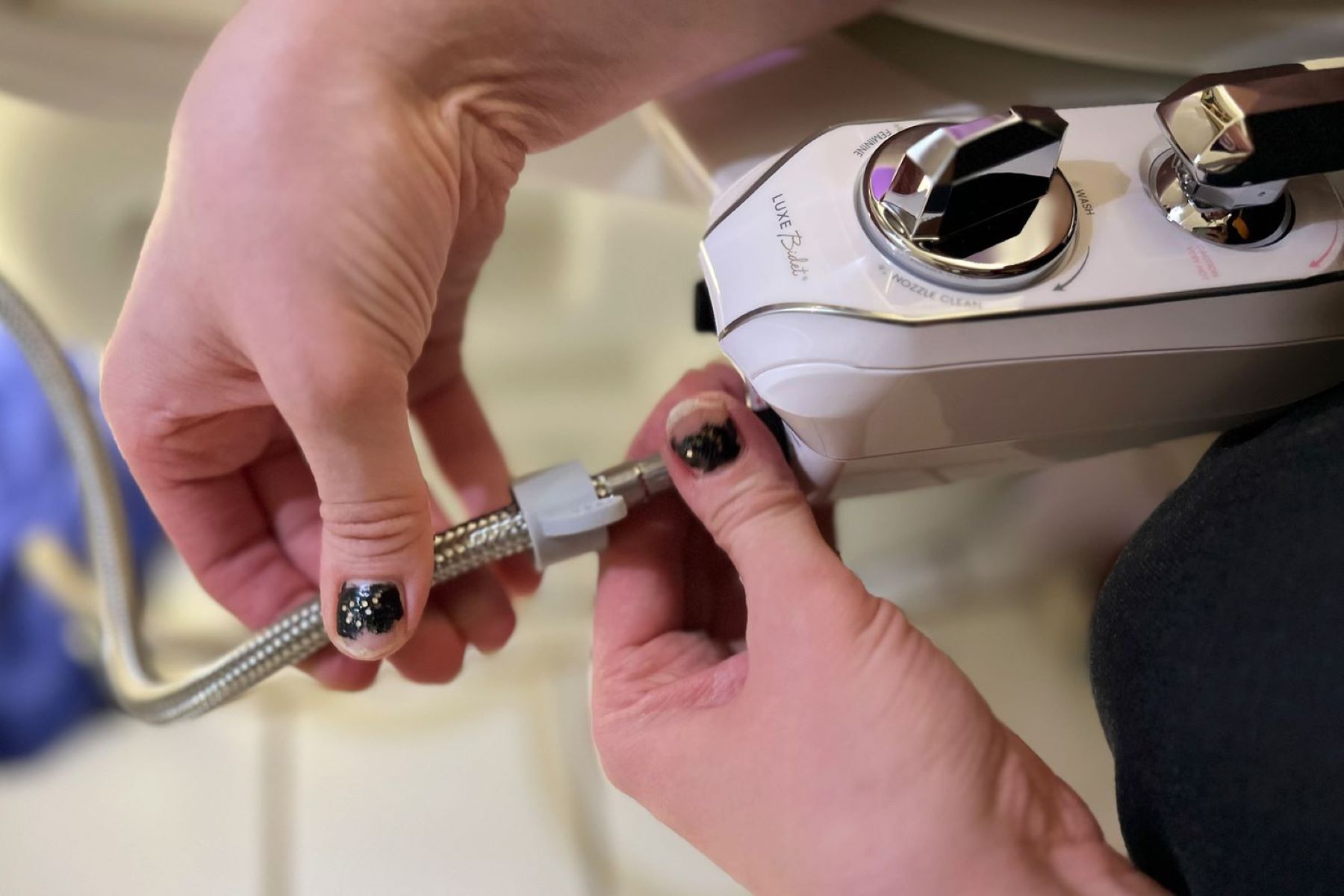

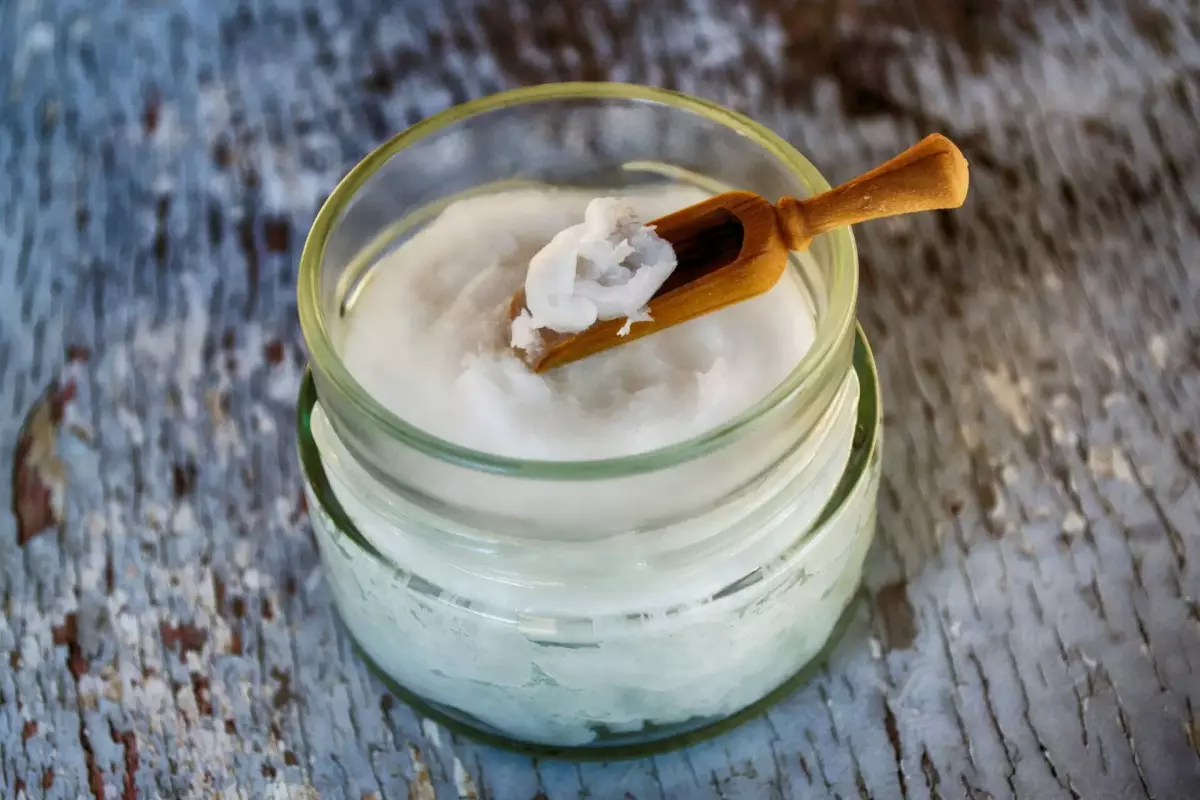
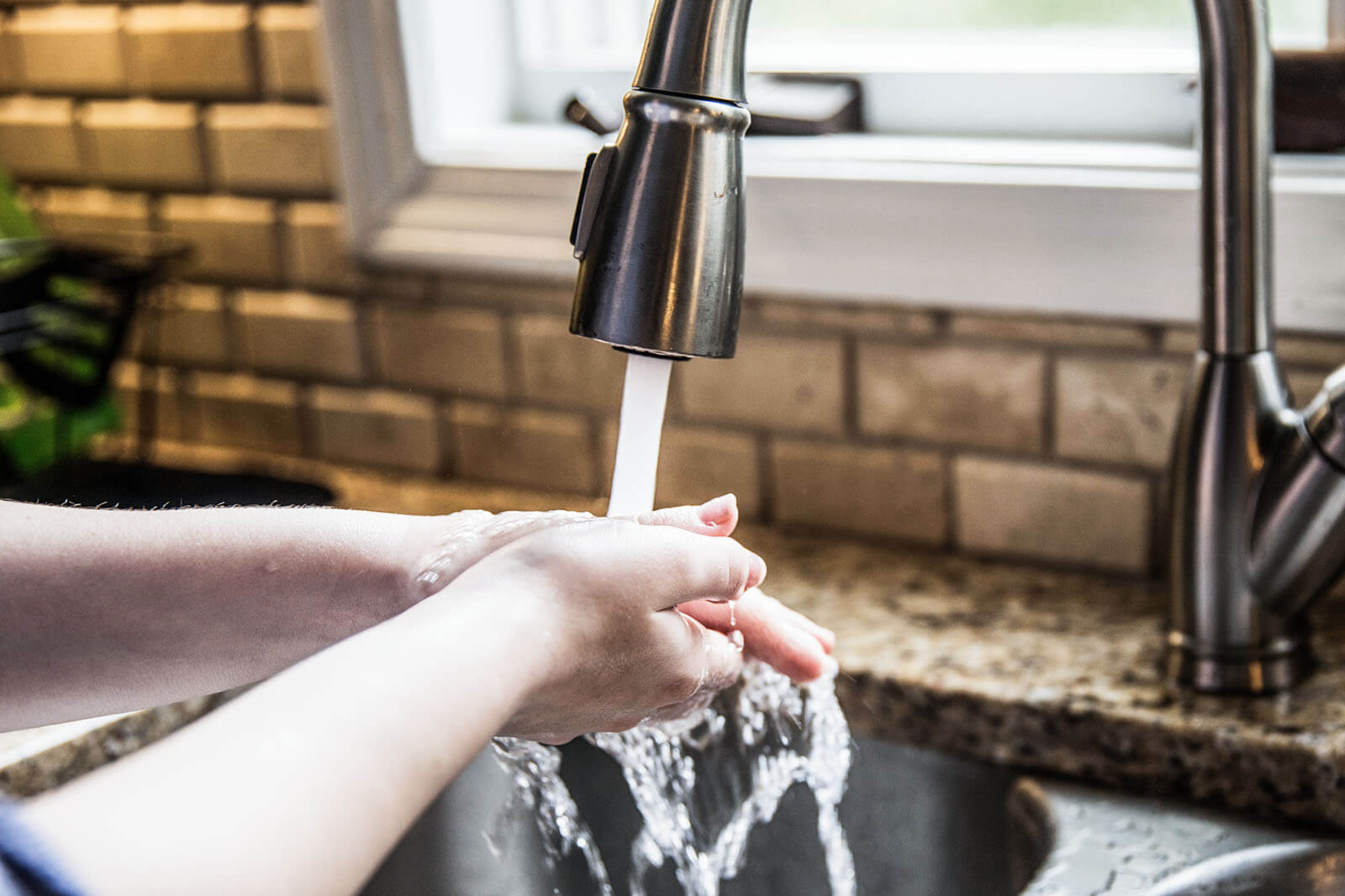


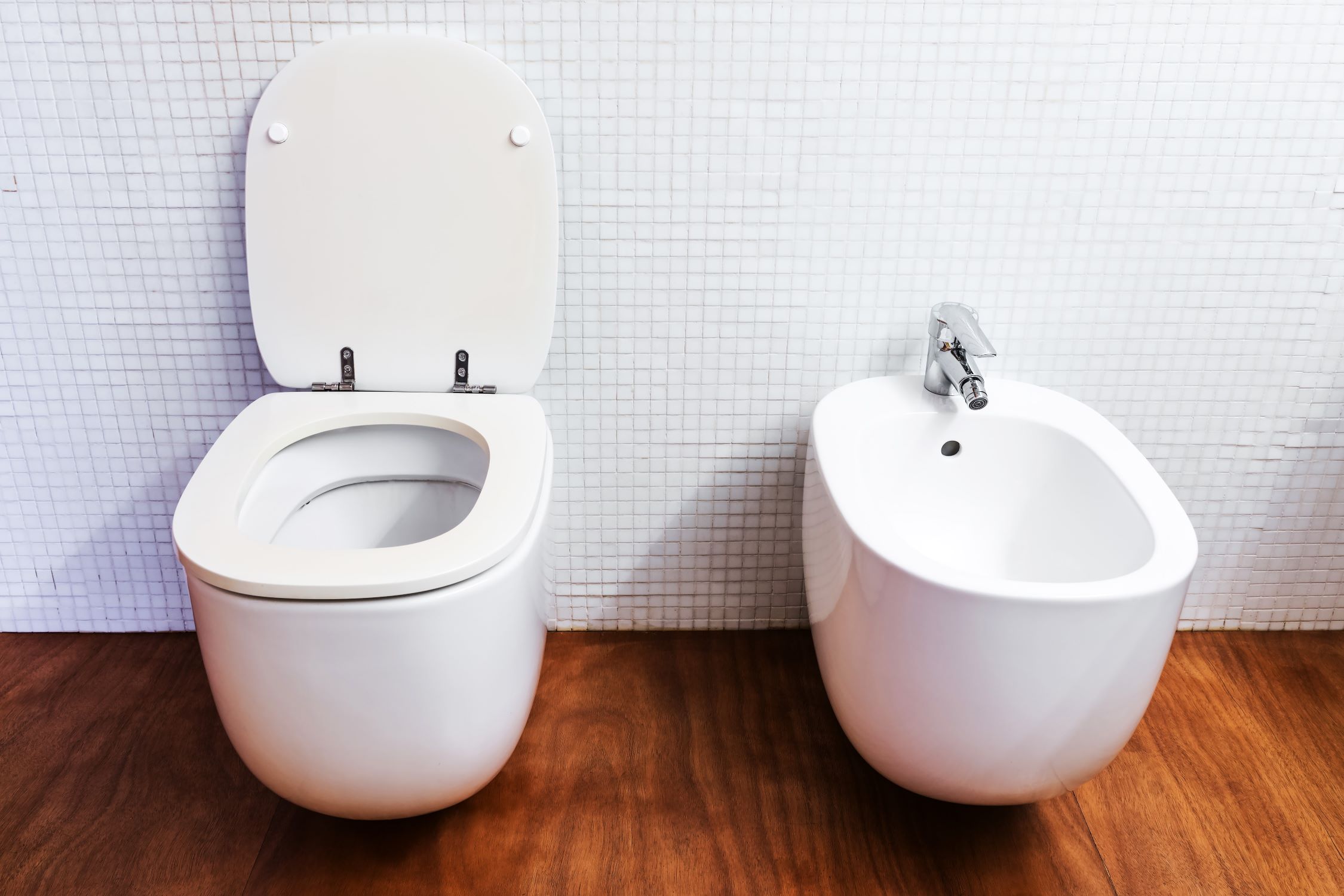
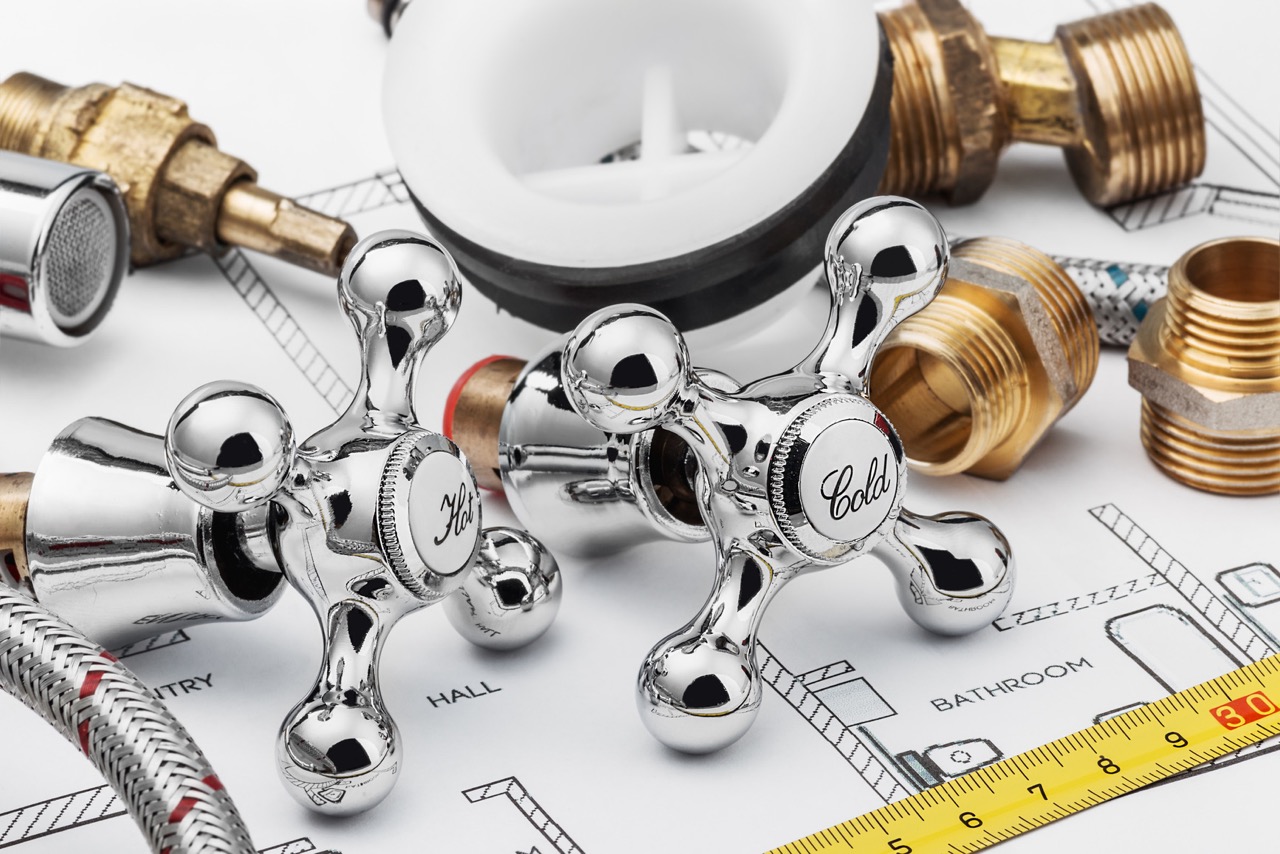



0 thoughts on “Where Does The Mineral Buildup On Plumbing Fixtures Come From?”